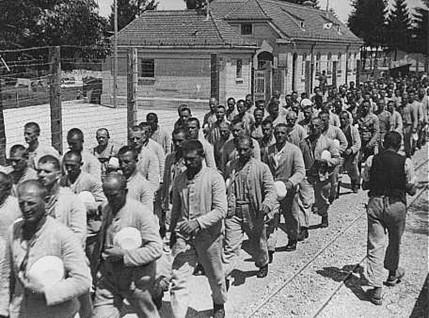
Dachau: The First Nazi Concentration Camp
By the early 1930s, the Nazi Party had gained a significant amount of support in Germany. In light of their popularity, some German politicians believed that they needed to include Nazi members in their new government. And so, Adolf Hitler was appointed (not elected) Chancellor of Germany on January 30, 1933. German President Paul von Hindenburg made the appointment only after he was encouraged by other politicians to do so. Hitler, they believed, if appointed, could be restrained by conservative politicians.
On February 27, 1933, the Reichstag, the German parliament building, was destroyed by a suspicious fire. A state of emergency was declared and Hitler was given dictatorial powers. Within weeks, he suspended Germany’s democracy and freedoms. In actuality, Hitler was using the situation to consolidate his power.
In March 1933, Dachau, a former factory, became the first concentration camp opened by the Nazi regime. The camp originally was intended for what the Nazis viewed as enemies of the state, their political opponents. After the original prisoners were brought to Dachau, over time, other targeted groups were interned there as well. Conditions at Dachau were brutal. It wasn’t until Kristallnacht (https://encyclopedia.ushmm.org/content/en/article/kristallnacht ) in November 1938, that Jewish prisoners were brought to Dachau.

Over the years it was in operation, from 1933 to 1945, Dachau served as a prison, a model camp, a guard training center, a work camp and a location for medical experiments. There, thousands of prisoners died of disease, starvation, overwork and shootings.
As the war was coming to an end and the Allies moved east, towards Germany, other camps were evacuated. Many prisoners were sent, by foot or train, to Dachau. Terrible conditions at Dachau continued to worsen.
On April 26, 1945, American soldiers were nearing the camp. By that time, 67,665 prisoners were registered in Dachau and the surrounding sub camps. Anticipating the arrival of the Americans, German guards forced over 25,000 Dachau prisoners out of the camp, some on trains and some on death marches.
On April 29, 1945, American soldiers, including twin brothers Hibby and Howard Margol, arrived at the camp. They encountered railroad cars which contained dead bodies of prisoners who had been brought to Dachau. The scenes around them were horrific. They liberated those still in the camp. Days later, American troops located the prisoners on the death marches and liberated them as well.
Of the over 44,000 documented camps, Dachau was the longest operating concentration camp in the Nazi system. Between 1933 and 1945, it is believed that over 200,000 people were imprisoned there, and over 40,000 people met their deaths at Dachau.